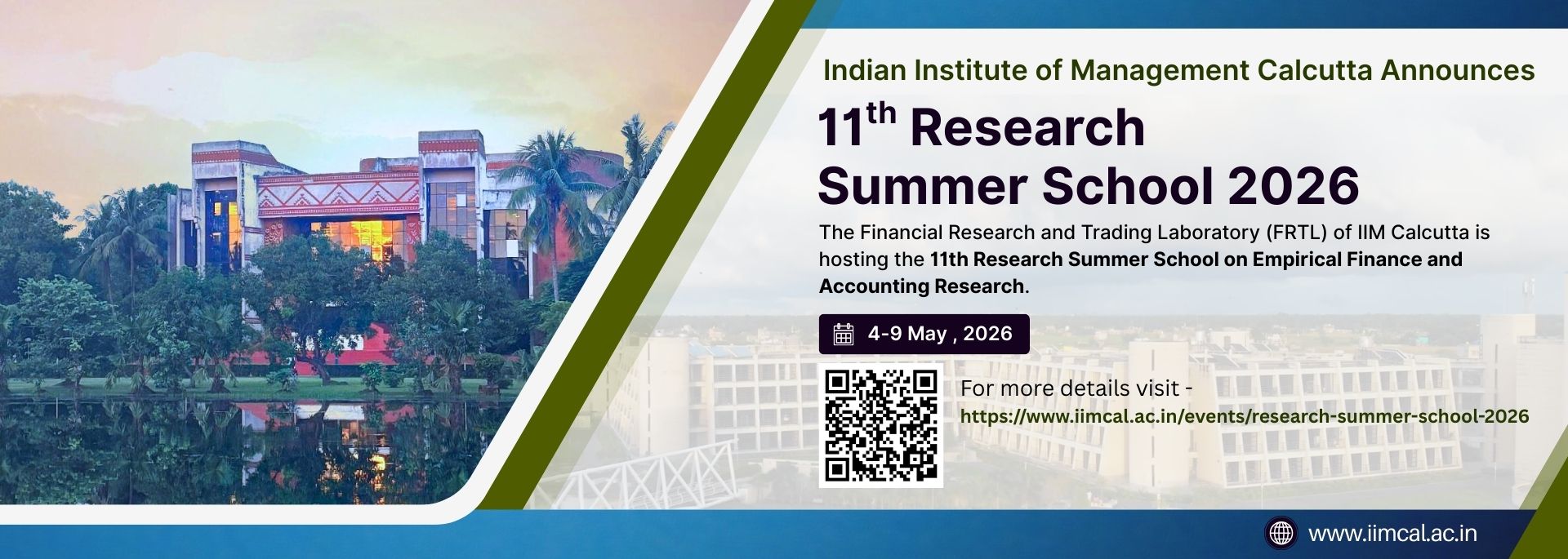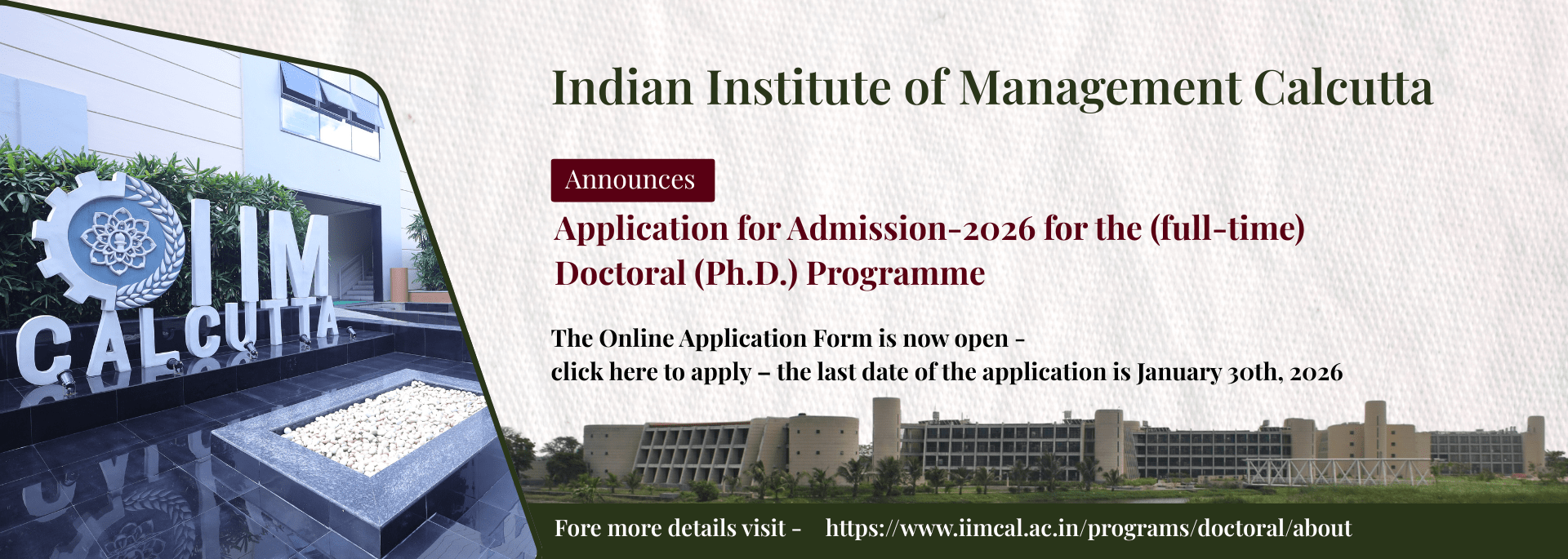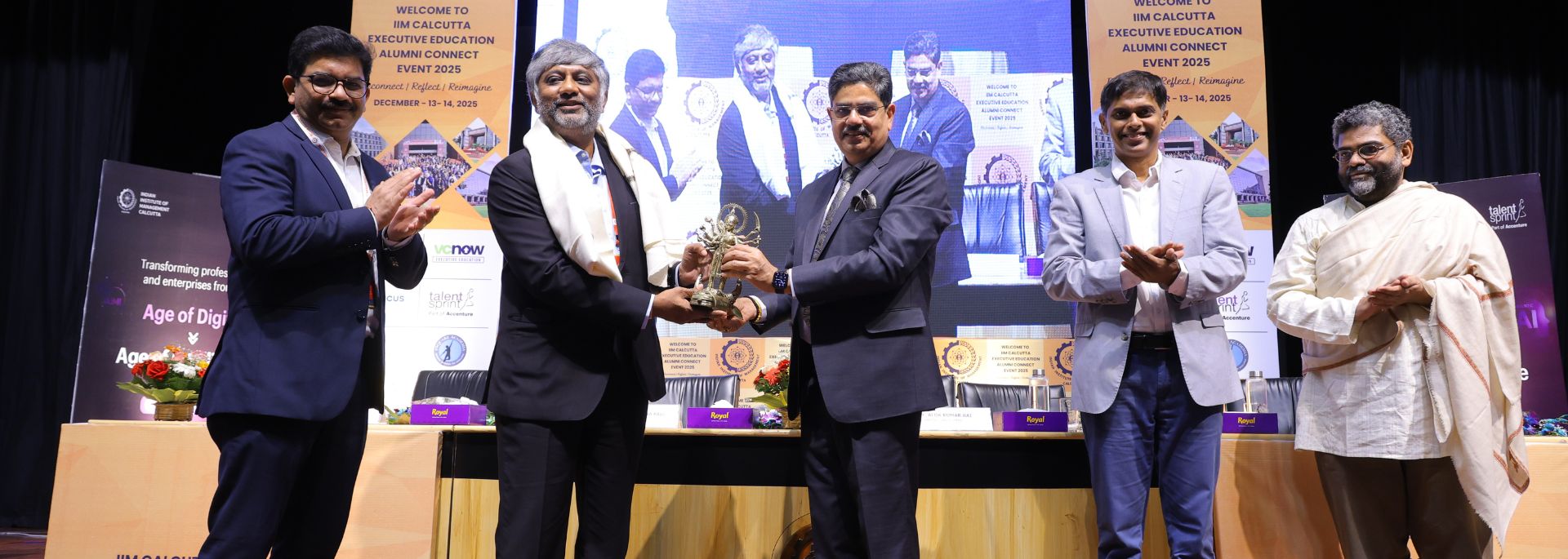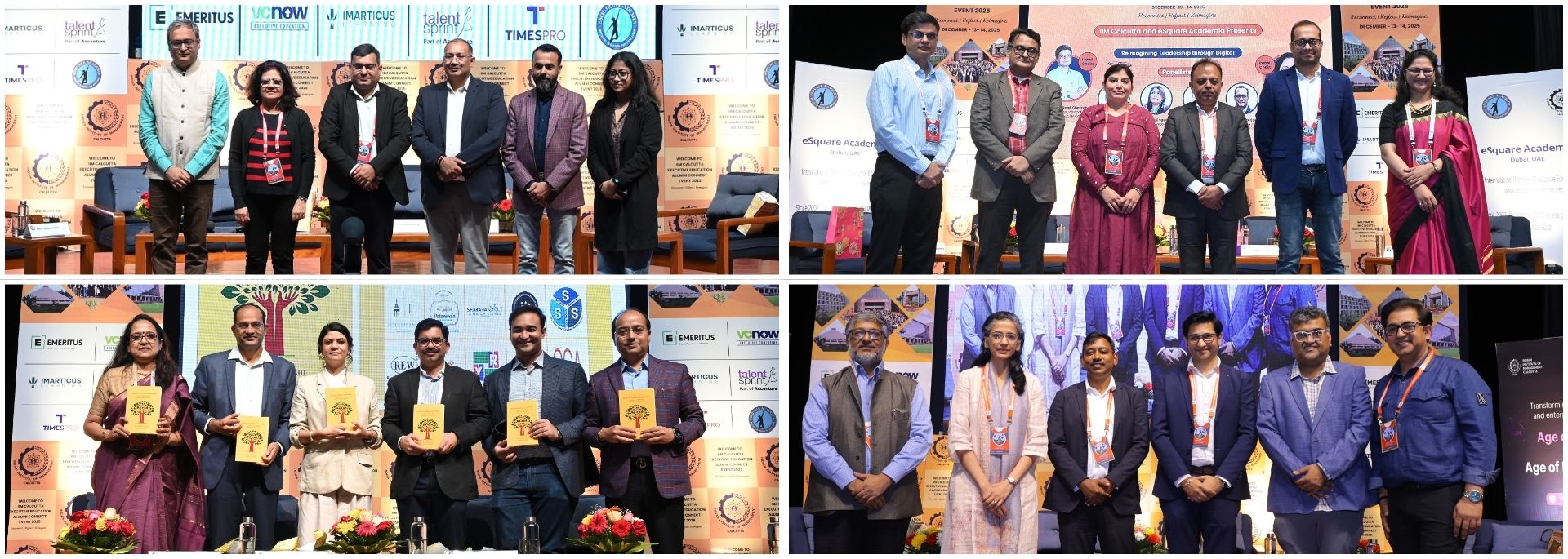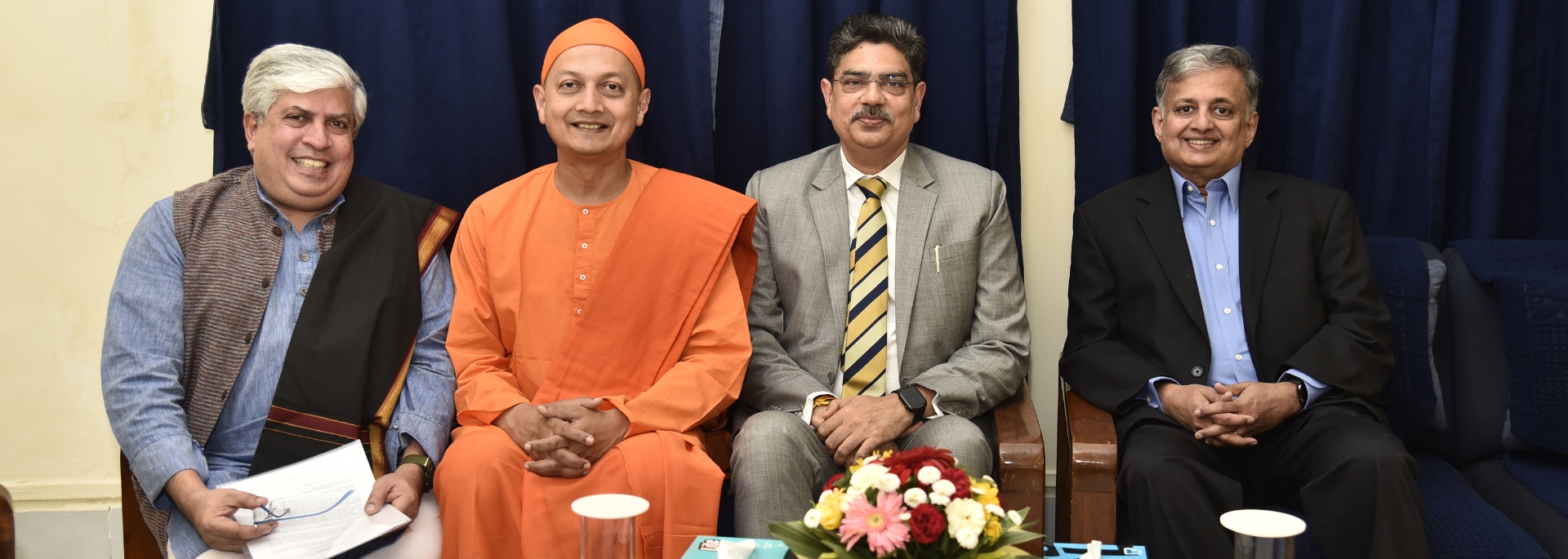In order to disseminate the output of research and lectures delivered by eminent visitors to the CDEP a series of Occasional Papers are in the process of publication. These papers are priced at INR 70 /USD 5.00 and can be ordered from the CDEP office. The following papers are available
Occasional Paper 1:
Suren Erkman and Ramesh Ramaswamy (2003) Industrial Ecology: Applicability in South Asia
Abstract: Industrial Ecology is the study of the physical, chemical and biological interactions and interrelationships both within and between industrial and ecological systems. It helps us to perceive the future trends in the re-organisation of the industrial system as a production process with marginal negative impacts on the natural environment. The concept of industrial ecology, based on that of 'industrial metabolism', is the result of some sort of a paradigm shift in the way industrial organisations are perceived. In due course of time, along this direction, one can hope to reach the much-awaited 'zero emission industrial system'.
For the industries in South Asia, there is a great need for innovative ideas based on a concept of networking of individual countries. In getting over the economic compulsions in which small industries in South Asia find it difficult to invest in better environmental management practices, eco-industrial networking can be of good help. In order to make available the basic principles of this potential concept to Indian industries - large, medium or small , CDEP decided to bring out this paper as the first in its Occasional paper series. This paper contains case studies in India for textile industries in Tirupur, Foundries in haora, Leather Industry in Tamil Nadu, Sugar paper complex in Tamil Nadu etc. It is hoped that industries, environmental management consultants and institutions interested in environmental studies will find this paper outlining new approaches for development planning as useful and interesting.
Occasional Paper 2:
B. B. Chakrabarti (2003) Comparative Eco-labelling Schemes of Selected Countries
Abstract: Ecolabelling involves the use of labels to inform the consumers about the environmental status of a product. The criteria for the award of such labels call for an overall assessment of the ecological impact of any product during its life cycle, including production, distribution, use, consumption as well as disposal. It need not be overemphasised that information on the environmental status and impacts of products can play a major role in the making of environmentally sound choice of products by the purchasers. In this way, ecolabelling has potential implications for trade and the market.
Though this may appear easy on the surface; ecolabelling programs have so far proven to be quite difficult to comprehensively assess the entire life cycle of the products and to establish product categories, which is worthy of being awarded the label. There are multiple trade-offs between the various objectives in practically every aspect of the programs. In addition, the hope that these schemes may eventually be self-financing, has not yet been achieved in any of the existing programs. Despite these difficulties, environmental labelling programs have expanded and spread over a number of countries. While at present their role must be viewed as a modest one, and as a part of the broader environmental policy; in the future years, it may very well emerge as an effective tool for environmental protection.
Based on a survey of available literature in this area and the information received from experts from various countries, this occasional paper presents a comparative analysis of ecolabelling schemes of a number of countries with varying degrees of success of ecolabelling. These are Canada, Germany, Japan, India, Thailand, South Korea, Taiwan and Nordic Swan. The paper traces the history of development of the selected ecolabels in these countries. This is followed by a review of three products – namely, paper, batteries and washing machines, that are examined with a focus on the criteria for ecolabelling. The next section analyses whether these labels could become a new form of effective non-tariff barrier used by the countries of the North. The bottleneck faced by the ecolabelling programs in different countries along with various factors, which affect such programs are studied. The administrative support received by the ecolabelling programs including green procurement by the governments is commented upon. In the last section certain conclusions based on the comparative analysis undertaken are drawn. This paper hence addresses a rather emerging topic as far as India is concerned and that is why it has been felt necessary to disseminate the outcome of this study.
Occasional Paper 3:
Jayanta Bandyopadhyay and Shama Perveen (2004) Moving the Mountains Up in the Global Environmental Agenda
Abstract: Ecolabelling involves the use of labels to inform the consumers about the environmental status of a product. The criteria for the award of such labels call for an overall assessment of the ecological impact of any product during its life cycle, including production, distribution, use, consumption as well as disposal. It need not be overemphasised that information on the environmental status and impacts of products can play a major role in the making of environmentally sound choice of products by the purchasers. In this way, ecolabelling has potential implications for trade and the market.
Though this may appear easy on the surface; ecolabelling programs have so far proven to be quite difficult to comprehensively assess the entire life cycle of the products and to establish product categories, which is worthy of being awarded the label. There are multiple trade-offs between the various objectives in practically every aspect of the programs. In addition, the hope that these schemes may eventually be self-financing, has not yet been achieved in any of the existing programs. Despite these difficulties, environmental labelling programs have expanded and spread over a number of countries. While at present their role must be viewed as a modest one, and as a part of the broader environmental policy; in the future years, it may very well emerge as an effective tool for environmental protection.
Based on a survey of available literature in this area and the information received from experts from various countries, this occasional paper presents a comparative analysis of ecolabelling schemes of a number of countries with varying degrees of success of ecolabelling. These are Canada, Germany, Japan, India, Thailand, South Korea, Taiwan and Nordic Swan. The paper traces the history of development of the selected ecolabels in these countries. This is followed by a review of three products – namely, paper, batteries and washing machines, that are examined with a focus on the criteria for ecolabelling. The next section analyses whether these labels could become a new form of effective non-tariff barrier used by the countries of the North. The bottleneck faced by the ecolabelling programs in different countries along with various factors, which affect such programs are studied. The administrative support received by the ecolabelling programs including green procurement by the governments is commented upon. In the last section certain conclusions based on the comparative analysis undertaken are drawn. This paper hence addresses a rather emerging topic as far as India is concerned and that is why it has been felt necessary to disseminate the outcome of this study.
Occasional Paper 4:
C. S. Shylajan and Souvik Bhattacharjya (2005) Economic Instruments for Managing Municipal Solid Waste in India
Abstract: In India, generation of municipal solid waste (MSW), industrial hazardous waste and biomedical waste have been increasing due to population growth, life style changes and economic development. On the other hand, waste management responses have not kept pace with the increasing quantities of waste resulting in (a) a high proportion of uncollected waste, and (b) poor standards of transportation, storage, treatment and disposal. The insanitary methods adopted for disposal of solid wastes is a serious health concern with significant environmental, social and health costs associated with it. Open dumping of garbage facilitates the breeding of disease vectors such as flies, mosquitoes, cockroaches, rats, and other pests. The poorly maintained landfill sites further, are prone to groundwater contamination because of leachate production.
According to a study done by The Energy and Resources Institute (TERI), annual per capita municipal solid waste generation in India is projected to grow from 1 to 1.33 percent, which would lead to a generation of over 260 million tones of waste by 2047 - a five fold increase over 1997 levels. It is further projected that an additional 1400 km2 of land is needed to dispose this waste, most of it in urban areas. As most of our urban areas are already congested, waste disposal sites have to be located far from source, with considerable cost implications in terms of transport and infrastructure. Another major issue associated with solid waste disposal is the emission of methane from land fills – a green house gas with global environmental implications. Methane emissions from landfills are projected to reach 39 million tones by 2047, from 7 million tones in 1997.
It is only after the issuance of Municipal Solid Waste (Management and Handling) Rules 2000, that the urban governance institutions have started to give some importance to solid waste management. December 31, 2003 was the stipulated deadline for compliance by all municipal authorities for setting up of waste processing and disposal facilities However, citing financial constraints, only a handful of municipalities have actually met this deadline. The average collection efficiency for MSW in Indian cities is about 72.5% as a result of which, a substantial part of the waste generated remains unattended, affecting the quality of life of millions of people.
The municipalities in India therefore face the challenge of reinforcing their available infrastructure for efficient MSW management and ensuring the scientific disposal of MSW. However, this seems to be a complex task considering low awareness levels and precarious financial situation that most urban governance institutions are afflicted with. As far as MSW management is concerned, municipalities could achieve financial self sufficiency through appropriate user charges from the waste generators or by identifying activities that generate resources from waste management. A paradigm shift has already taken root which identifies municipal solid waste as solid wealth and puts it to innovative uses ranging from power to vermicompost generation.
World over, many innovative approaches are being adopted for sustainable solid waste management viz. reduce waste generation at source (fees and tax incentives, mandatory standards, education and voluntary compliance), technological interventions (in collection, treatment and disposal of wastes), and institutional reforms (ragpickers, NGO and private sector participation). India could learn from these experiences and devise strategies and approaches that best suit its own MSW management requirements.
The current paper analyzes the role of economic instruments in MSW management. In particular, it reviews the successful use of market based approaches for MSW management in European Union, OECD and Latin American countries. It further includes a critical review of waste management policies in India on the basis of case studies carried out in three metropolis i.e., Kolkata, Delhi and Chennai. The study reveals that the existing policies in India are mostly regulatory in nature focusing on transfer of waste from source to disposal sites. The paper strongly suggests that sustainable solid waste management requires the adoption of incentive based economic instruments backed by proper institutional and regulatory mechanisms.
Occasional Paper 6:
M. S. Swaminathan (2004) Feeding the One Billion Plus: The Challenges of Sustainable Agriculture Policy
Abstract: The concept of food security has evolved during the last 3 decades to include not only food availability, but also economic access to food and the biological absorption of food in the body. Adequate per capita availability of food is a function of the balance between food production on the one hand and growth in population and purchasing power, on the other. In some parts of India, urbanisation enhanced the consumption of animal products and thereby adds to the demand for feed grains and fodder. The 'Green Revolution' of the sixties and seventies helped populous countries like India to gain a breathing spell during which they could attempt to achieve a balance between population growth and supporting capacity of the ecosystems. Inspite of the success of the population stabilising efforts in many developing countries, the UN projections indicate that the global population may range from 8 to 10 billion by 2050. This paper discusses the challenge of achieving sustainable advances in farm productivity.
Since land and water are limiting resources for agriculture, there is no option except to produce more food and other agricultural commodities from less per capita arable land and irrigation water. In other words, the need for more food has to be met through higher yields per units of land, water, energy and time. It would therefore be useful to examine how science can be mobilised for raising further the ceiling to biological productivity without associated ecological harm. It will be appropriate to refer to the emerging scientific progress on the farms as an "ever-green revolution", to emphasise that the productivity advance is sustainable over time since it is rooted in the principles of ecology, economics, social and gender equity and employment generation. The green revolution has so far helped to keep the rate of growth in food production above population growth rate. The green revolution was however the result of public good research, supported by public funds. The technologies of the emerging gene revolution in contrast are spearheaded by proprietary science and can come under monopolistic control. How then can we harness the power of frontier science to promote ever-green revolution in our farms?
This paper was presented by Prof. M. S. Swaminathan at CDEP, IIM Calcutta in 2000. The paper traces the emergence of green ecotechnology and yield revolutions and discusses in detail their implications for India's food security. The paper further discusses international multilateral agreements like WTA and TRIPS and ways to safeguard the intellectual rights and traditional knowledge of small and marginal farmers. The paper concludes with a seven point action plan to make India hunger free.
Occasional Paper 5:
Kakali Mukhopadhyay (2005) Impact of Liberalised Trade on Energy Use and CO2 Emissions in India.
Abstract: "The need to ensure that trade and environment policies are mutually supportive is more pressing today than ever before. However, successful integration of these policies can only be achieved through a constructive dialogue based on far broader awareness and understanding of the complex interlinkages between trade and our environment." (Dr. Klaus Töpfer, Executive Director, UNEP).
As national and global economies are increasingly getting integrated, fundamental and pervasive changes have been occurring in our world. The trend toward globalization has been driven in part by new communication and transport technologies and in part by reduced barriers to international trade and investment flows. Trade flows and the rules that govern them have become a new catalytic force for economic, environmental and social change. The way societies live and work is being influenced by the growth and liberalization of international trade. WTO statistics estimated world merchandise trade at $7.3 trillion and commercial services at $1.8 trillion in 2003. International trade is becoming an increasingly important driver of economic development, as it has been expanding at almost twice the pace of total global economic activity for the past 15 years. A growing number of developing countries look to trade and investment as a central part of their strategies for rapid development.
The world has also witnessed enormous environmental change in the last 50 years. Global carbon dioxide emissions have quadrupled, biological resources are being overexploited beyond regenerative capacities of ecosystems, and if current water use trends continue, two-thirds of the world is projected to live with less than 1,000 litres of water per person a year in 30 years. Such environmental damage has been driven in part by human population explosion and at least in part by over exploitation of natural resources triggered by expanding global trade.
The institutions for addressing such problems have also evolved. In the last 15 years alone 11 major multilateral environmental agreements have entered into force, dealing with such issues as ozone depletion, transport of hazardous waste, and migratory species. At the regional or bilateral level roughly a thousand more have entered into force, constituting an enormous and complex body of environmental law. In India, regulations have moved from blanket "command and control" solutions to a mixed bag of tools that includes market-based incentives such as pollution charges and taxes as highlighted in the Draft National Environment Policy 2004.
These trends are not isolated; they are fundamentally related. Much environmental damage is due to the increased scale of global economic activity. International trade has become a major driver of environmental change. As economic globalization proceeds and the global nature of many environmental problems becomes more evident, there is bound to be friction between the multilateral systems of law governing both.
The trade and environment interlinkages are complex and intricate. Though there is general understanding and acceptance of these linkages, specific awareness and knowledge required to take informed decisions is still missing. The current paper attempts to explore the impact of trade on energy use and CO2 emissions with special reference to India.
The current paper contributes to the environment-trade debate by evaluating the impacts of international trade on energy use and emissions of carbon dioxide in the Indian economy during 1993-94 using Input-Output techniques. India is an energy deficit state which imports much of its energy requirements. If India shapes its trade policies in such a way that they encourage import of energy intensive goods and encourage exports in energy efficient goods, it makes imminent ecological and economic sense. The current paper contributes to a better understanding of this interlinkage by estimating the energy terms of trade and pollution terms of trade of non-energy goods, which will test whether the pollution haven hypothesis is valid for India, or not. The paper also estimates the energy and carbon balance of trade for India. Further, through a simulation exercise, the study also estimates the same for the 10th plan period (2002-07).
Since, India is likely to move towards pollution haven in future, this paper calls for a critical look at the existing trade and environmental policies which are not integrated. This paper suggests the need for integrated trade environmental policies in order to harmonize India's trade targets in future with environmental priorities including those related to international commitments with respect to Agenda 21 and the UN Framework Convention for Climate Change.
This paper is aimed mainly at those with some knowledge about trade, environment or development and as a methodological reference tool for policy-makers and practitioners. This paper will also help to broaden the awareness and understanding of the complex interlinkages between trade and our environment in general and trade and energy with reference to India in particular.
Occasional Paper 7:
Raghu Ram, T. L. (2005) Water Quality: Governance and Strategy Options for India
Abstract: Although water is a widely available material on planet Earth, freshwater amounts to only about 0.26% of total global water reserves. This tiny fraction nonetheless defines the scope and limitations of our human, social and economic development, making it essential for our health, our spiritual/cultural needs, our comfort, livelihood and for supporting the ecosystems. Says Koichiro Matsura, Director General, UNESCO - "Water is probably the only natural resource to touch all aspects of human civilization – from agricultural and industrial development to cultural and religious values embedded in society."
The pressure of a steadily growing populace and the progressive concentration of economic activities in urban areas, have further compounded the problem. Once viewed as a bountiful resource, many parts of the world are now steadily heading towards an acute freshwater scarcity. Per capita annual freshwater availability in India has declined from 5150 m3 during 1940s to about 2200 m3 in 2000. Moreover, while annual available precipitation in the country has been estimated at 4000 cu km, the monsoonal fluctuations ensure considerable variation in its distribution pattern in both space and time.
Most serious concerns about the crisis of freshwater now revolve around the supply of 'safe drinking water'. The 1991 Census data shows that 81.38% of total urban population and 55.54% of total rural population in India have access to "safe drinking water" only. Spurred by the past legacy of failures, the Comptroller and Auditor General in its 2002 report had rightly remarked, "There is a strong question mark about the possibility of the achievement of the new envisaged objective of providing potable drinking water to all villages by 2004". The continued prevalence of water-borne diseases like diarrhoea, hepatitis, enteric fever and cholera taking a significant toll on the population further waters down tall claims about adequate water quality and sanitation coverage in the country. Despite laudable achievements by the sector during the International Decade for Water Supply and Sanitation (1981-1990) to meet these basic needs, there remains a tremendous backlog in terms of the billions of unserved people, mostly the poor and marginalized citizens living in squalid, unhealthy environments in the developing world. The WASH campaign (Water, Sanitation and Hygiene for all) in effect, unfurled by the Geneva based Water Supply and Sanitation Collaborative Council (WSSCC) becomes a political and social imperative stemming from the core realisation that sustainable development starts with people's health and dignity.
Damages to the world's water resources come both from quantitative overexploitation, as much from pollution. One of the most pervasive causes of water pollution in the country is the untreated city sewage and industrial waste discharged into the rivers - the facilities for treating which are not adequate in any part of the country. Pollution of ground and surface waters from agrochemicals (fertilizers, weedicides and pesticides) and from industry pose a major environmental health hazard, with potentially significant costs to the country. A World Bank study done in 1995 has estimated that the total cost of environmental damage in India amounts to US $9.7 billion annually, or 4.5 per cent of the gross domestic product. Of this, 59 per cent result from the health impacts of water pollution.
Whilst polluting units cite financial constraints in managing its wastes, the author has estimated that the annualized costs of water pollution abatement in major water polluting industries in India range from an abysmal 0.01 % (in cement sector) to 3.9% (in chemical sector) of the annual turnover of polluting industries. Additionally, in the absence of 'carrying capacity' based discharge standards and the considerably low water cess charged by pollution control boards, there is no incentive or disincentive for the users to take into consideration the environmental impacts and hence to reduce wastewater discharge and water use. The main objective of this paper therefore is to prescribe measures to make industries accountable and self-monitoring, whether it be through legal standards or voluntary initiatives like EMS, ecolabelling etc.
Protection of water quality has emerged as a prominent challenge in the 21st century. The present framework of the National Water Policy needs to be further strengthened in these directions. This volume addresses this critical question and hopefully will contribute to the emergence of the knowledge base needed for addressing the current gaps in water resource governance framework in the country and to suggest important measures for policy change and action.
Summary of "Balancing the Scales: Charting INDIA's Pathway Towards Sustainable Manufacturing Growth"
Introduction
India is at a crossroads between rapid industrial growth and its ambitious sustainability commitments. The government aims to make India a self-reliant global manufacturing powerhouse, but this expansion must align with environmental goals. A panel discussion at Envision’25, organized by IIM Calcutta's PGPEX-VLM cohort, brought together industry experts to discuss how India can achieve sustainable manufacturing growth.
Key Discussion Points
1. Challenges in Decarbonization
- The steel, aluminum, and cement industries account for about one-third of India’s carbon emissions.
- Indian steel production emits 2.5–2.55 tons of CO2 per ton, compared to 1.82 tons in the EU and the U.S.
- Government policies, such as a green steel procurement policy, are crucial for driving change.
2. Circular Economy Practices
- Companies like Bharat Forge have successfully reduced their emissions through regenerative furnaces, waste recycling, and switching to cleaner fuels.
- These practices not only improve sustainability but also enhance economic performance.
3. Technological Innovations for Emission Reduction
- Adoption of AI, IoT, and automation in manufacturing can optimize efficiency and reduce emissions.
- Power-to-X (P2X) technologies and green hydrogen are promising for industries like steel and cement, but cost and scalability remain major challenges.
4. Policy and Market Mechanisms
- The government is introducing a star rating system for green steel and plans to incentivize low-carbon products.
- India’s “line-of-sight” scenario projects peak emissions around 2040, but an accelerated transition could bring this forward to 2030.
5. Electric Vehicle (EV) Market & Challenges
- EV retrofitting is emerging as a cost-effective solution.
- India relies heavily on imported materials (e.g., rare earth magnets, silicon steel) for EV components, necessitating stronger domestic supply chains.
6. Carbon Capture and Green Hydrogen
- India is developing a Carbon Capture, Utilization, and Storage (CCUS) policy to support industrial decarbonization.
- The National Green Hydrogen Mission aims to make green hydrogen cost-competitive, but production costs remain a significant barrier.
7. Financing and Policy Support
- Small and medium enterprises (SMEs) struggle to afford green transitions.
- India needs clearer green financing frameworks and international collaborations to support sustainability investments.
Key Takeaways
- Decarbonization Efforts: The steel, mining, and cement sectors are making progress but require stronger policy and financial support.
- Technology & Innovation: AI, IoT, and green hydrogen are essential tools for reducing industrial emissions.
- Circular Economy Success: Companies are implementing sustainable practices, but broader adoption is needed.
- Government’s Role: Policy incentives, tax benefits, and stricter regulations will be key in driving sustainable manufacturing.
- Financial Challenges: The transition to green technologies is expensive, requiring significant investment and public-private partnerships.
Recommendations
- Accelerate circular economy adoption to optimize resources.
- Invest in research and development for cleaner industrial technologies.
- Implement carbon pricing, tax incentives, and green procurement policies.
- Set clear decarbonization milestones aligned with India's 2070 net-zero goal.
- Foster collaboration between industry, government, and academia.
- Upskill workers to support the transition to sustainable manufacturing.
- Encourage domestic production of critical EV components and green technologies.
- Standardize carbon measurement and reporting practices.
Conclusion
India’s pathway to sustainable manufacturing requires balancing growth with environmental responsibility. Through policy interventions, technological innovations, and industry collaboration, the country can position itself as a global leader in green manufacturing.


